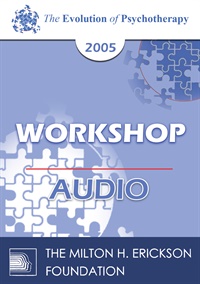Workshop Introduction and Overview
-
Cloe Madanes welcomes attendees; outlines workshop format: concepts, strategies, video demonstrations.
-
Emphasizes use of videotape and one-way mirrors in therapy sessions.
-
Goal: provide tools for working effectively with couples.
Core Therapy Concepts and Approaches
-
Focus on interactional view—changing social context to change behavior.
-
Empathy is key to understanding clients.
-
Introduces use of directives (direct, indirect, paradoxical) to prompt action over discussion.
Directives and Action-Based Therapy
-
Therapy should be engaging and behavior-focused.
-
Tone, delivery, and interest matter as much as content.
-
Action leads to emotional change.
Key Therapy Concepts: Unit, Sequence, Hierarchy
-
Uses examples (e.g., child-parent dynamics) to explain relational hierarchies.
-
Highlights problems from cross-generational coalitions.
-
Triangles in family systems often disrupt hierarchy.
Relationship Patterns: Symmetry and Complementarity
-
Symmetrical relationships = power struggle.
-
Complementary relationships = role division.
-
Malignant escalation occurs when partners don't complement each other.
Creating Boundaries in Couples Therapy
-
Boundaries help restore couple unity.
-
Examples: locking doors, rituals to distance from families of origin.
-
Humor can help establish these boundaries.
Therapeutic Rituals
-
Rituals help couples reset (e.g., vow renewals, second honeymoons).
-
Rituals should match the intensity of the couple’s issues.
-
Example: a violent couple performs a symbolic ritual to bury the past.
Creating Positive Memories
-
Couples are encouraged to recall and create good memories.
-
Cultural rituals and stereotypes can be leveraged to help bonding.
-
Good memories promote emotional healing.
Marriage and Loyalty Transitions
-
Transitioning loyalty from family of origin to spouse is often painful.
-
Therapist’s role is to guide the couple through this transition.
-
A video case is shown to illustrate.
Unbalancing in Therapy and Behavior-Based Techniques
-
Sometimes therapists enter through one partner to “unbalance” the couple and create change.
-
Live demo requested with Tony Robbins.
Using Fines to Change Behavior
-
Fines used as incentives for punctuality, dietary habits, or social events.
-
Couples find success using humorous or symbolic financial penalties.
-
Example: husband pays wife per minute late.
Dealing with Anxiety and Nagging
-
Reframe social events as “work” for anxious spouses.
-
Weekly “executive meetings” help structure communication.
-
Comic relief technique: husband removes clothing when nagged.
Addressing Marital Violence
-
Family involvement is crucial in preventing recurrence.
-
Steps include: exact recounting of violence, apology, and clear consequences.
-
Separation may be necessary; extended family helps monitor.
Coaching One Partner
-
Therapist coaches one spouse to change behavior that influences the other.
-
Example: how a husband can “win” back affection.
-
Introduces statute of limitations on past grievances (e.g., 7 years).
-
“Caring days” help rebuild affection with concrete loving actions.
Emotional and Spiritual Development Stages
-
Development stages: control → be loved → give love → repentance/forgiveness.
-
Spiritual growth helps couples evolve relationally.
-
Goal is shifting from symmetrical to complementary roles.



